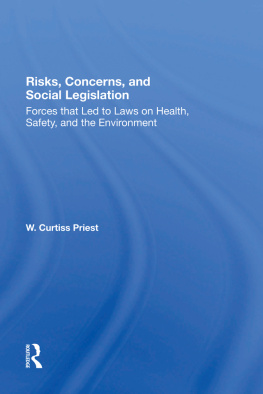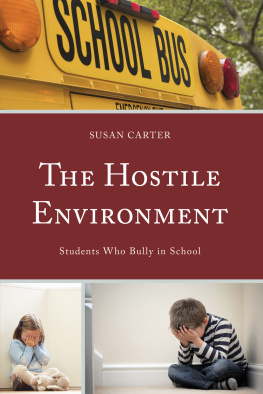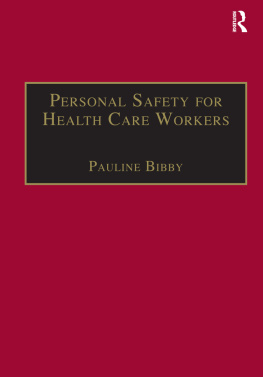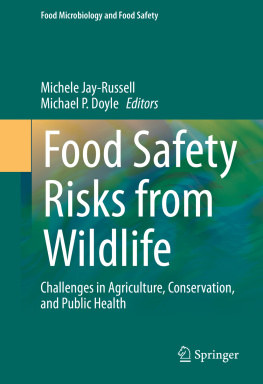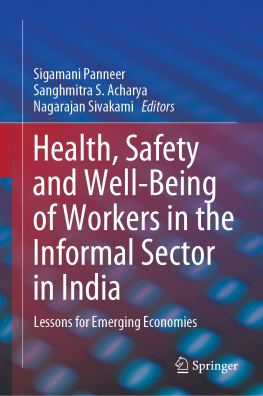Risks, Concerns, and Social Legislation
Risks, Concerns, and Social Legislation
Forces that Led to Laws on Health, Safety, and the Environment
W. Curtiss Priest
First published 1988 by Westview Press
Published 2019 by Routledge
52 Vanderbilt Avenue, New York, NY 10017
2 Park Square, Milton Park, Abingdon, Oxon OX14 4RN
Routledge is an imprint of the Taylor & Francis Group, an informa business
Copyright 1988 by Taylor & Francis
All rights reserved. No part of this book may be reprinted or reproduced or utilised in any form or by any electronic, mechanical, or other means, now known or hereafter invented, including photocopying and recording, or in any information storage or retrieval system, without permission in writing from the publishers.
Notice:
Product or corporate names may be trademarks or registered trademarks, and are used only for identification and explanation without intent to infringe.
Library of Congress Cataloging-in-Publication Data
Priest, W. Curtiss
Risks, concerns, and social legislation: forces that led to laws
on health, safety, and the environment / by W. Curtiss Priest.
p. cm.(Westview special studies in public policy and
public systems management)
Bibliography: p.
Includes index.
ISBN 0-8133-7479-0
1. Social legislationUnited States. 2. Safety regulations
United States. 3. Health risk assessmentUnited States.
I. Title. II. Series.
KF3300.P75 1988
344.73'04dc19
[347.3044] 87-29531
CIP
ISBN 13: 978-0-367-28614-9 (hbk)
A team of fourteen people substantially contributed to the success of the research project on which this book is based. The original research was conducted at the Center for Policy Alternatives of the Massachusetts Institute of Technology, which was closed in 1986, in large part because the era of social legislation described in this manuscript had also come to a close. In memory of the Center I especially would like to recall the Center's founder, Dr. Herbert Hollomon -- an inspiration to all who would aspire to understanding a complex world of technology and mankind.
Also, without the unswerving dedication of Dr. Nicholas Ashford, this book would not be possible. Dr. Ashford assembled both many of the basic perspectives on health, life and regulation described here, and the research staff that conducted over ten years of support for the federal social regulatory activity.
The MIT students, both graduate and undergraduate, who worked on the project put in many hours performing content analysis, piecing together the account, and contributing pieces of this book. I had the pleasure of working, on this project, with some of the brightest and most perceptive students I knew during my days at the Center for Policy Alternatives. In particular John A. Smith, Jr. and Pamela Loprest contributed substantially and with dedication. Other contributors inducted Kyung Koh, Cindi Katz, Betsy Hanson, Helene Sperling, and Paul Jaminet.
My thanks also extend to Dr. Dale Hattis for his many insights into risk analysis, Dr. Caroline Whitbeck for her contributions to philosophy and values, and Dr. William White (University of Chicago) for consulting on the history of occupational safety concerns. Also, my thanks go to Ms. Rachelle Hollander of the National Science Foundation (Program on Ethics and Values in Science and Technology Program) and the peer reviewers for funding the project. Finally, I thank Eugene Narrett for helping take a rough initial manuscript and adding consistency and polish.
To complete the list, I also congratulate the congressmen, legislative aides, newspaper reporters, investigative writers, advocates, and others who helped translate the pain and suffering into legislative action.
W. Curtiss Priest
Lexington, MA
Introduction
Purpose
It has become easy to lose sight of the social forces that led to regulatory legislation during the late 60's and early 70's. As early as the Carter administration there had been a distinct shift in concern away from the original human concerns to the costs of regulation and by the Reagan administration hardly any vestige of the original concerns was left whatsoever.
These changes in political emphasis have obscured not only the generating forces but the goals of health, safety and environmental legislation. Regulatory impact analysis by its very nature is a value that competes with those that prompted such legislation. For example, while the Occupational and Safety Health Act mandates "safe and healthful working conditions for working men and women," the implementation of the legislation required cost-based definitions of "too much safety and health" and "adequate safety and health." The analytical tools available to the federal government and its contractors, moreover, could not measure the values that were contained within this act and others like it Some government bodies, such as the Consumer Product Safety Commission, found themselves trying to justify control of hazards on the basis only of hospital costs and some arbitrary numeric representation of pain and suffering, a practice which consistently underestimated the impact of the injury on the person or family. In this way, during the 70's government analysts and economists placed monetary values on everything from chronic disease to loss of life. Regulatory impact analysis rationalized this process by focussing on secondary costs and issues and government agencies embraced it in order to justify their regulatory decisions.
These bureaucratic restraints on the goals of regulatory legislation have been accentuated by the current administration's championing of other competing values: market expansion and a severely curtailed role for government as protector of the public from industry-related hazards.
This book serves two major aims. First it provides historical documentation of the social forces that lead to legislation and reviews values that have been important in shaping government's role as mediator between individual, family, community and industry. Second, the historical analysis verifies a prescriptive values framework. This verified values framework can inform future discussions, debates and legislation regarding not only health, safety, and environmental law and regulation but also the broad area of health policy.
Scope of the Research
The first part of our research identified "expressions of concern" about the issues and period in question. The second part sifted these remarks to derive the underlying values and "value phrases."
In order to survey a broad range of evaluative criteria, we studied legislation from five areas:
- Air Pollution -- Including the Air Quality Act of 1967
- Aviation Safety -- A series of laws from the 1920's to the present
- Consumer Product Safety -- Including the Consumer Product Safety Act of 1972
- Occupational Health and Safety -- Including the Occupational Health and Safety Act of 1970
- Pesticide Control -- Including the Federal Insecticide, Fungicide, and Rodenticide Act of 1947, amended 1972
To document the social forces leading to legislation in these fields, we consulted:
- Secondary Literature and Interviews
- Content Analysis of five major indexes of popular and professional articles
- Content Analysis of congressional hearings proceeding the enactment of legislation

